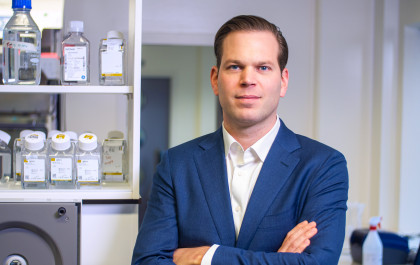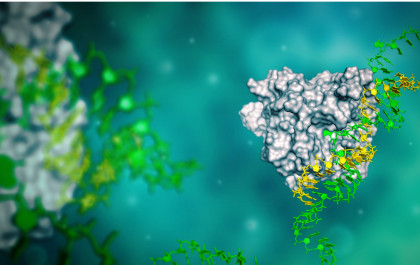On a Shared Quest to Find Treatments for Rare Diseases, ProQR Supports Rare Disease Day
LEIDEN, the Netherlands, Feb. 27, 2017 (GLOBE NEWSWIRE) -- ProQR Therapeutics N.V. (Nasdaq:PRQR), a company dedicated to changing lives through the creation of transformative RNA medicines for the treatment of severe genetic rare diseases including cystic fibrosis (CF), Leber's congenital amaurosis Type 10 (LCA 10) and dystrophic epidermolysis bullosa (DEB), today announced its support of Rare Disease Day, joining rare disease patients and families, patient organizations and health care providers to raise awareness of rare diseases.
Together with members of the rare disease community, ProQR is proud to participate at a Rare Disease Day Lunch Symposium, organized by Leiden Bio Science Park Foundation (NL) to highlight the importance of research in rare diseases and recognize the crucial role that patients play in it.
Every last day of February, Rare Disease Day is an international awareness campaign led by the patient organization EURORDIS and supported by hundreds of other patient organizations around the world. February 28, 2017 marks the tenth Rare Disease Day and this year’s slogan 'With research, possibilities are limitless’ underlines the hope that research brings to the millions of people living with a rare disease around the world and their families.
“It is our mission to make a meaningful impact on the lives of patients that suffer from severe genetic rare diseases and therefore we are honored to be part of this event on Rare Disease Day to raise awareness and emphasize the importance of research,” said Daniel A. de Boer, Chief Executive Officer of ProQR. “Together with our partners at the Leiden Bio Science Park and many others around the world we are inspired by the stories of people affected by rare diseases and hope many more will join us in our quest to find treatments for all of them.”
About Cystic Fibrosis
CF is the most common fatal inherited disease in the Western world and affects an estimated 65,000 patients worldwide. In people with CF, a defective CFTR gene causes a thick, buildup of mucus in the lungs, pancreas and other organs. In the lungs, the mucus clogs the airways and traps bacteria leading to infections, extensive lung damage and eventually, respiratory failure. There is no cure for CF. Disease manifestations lead to a shortened life expectancy with a median age of death of 27 years. Although over 1,900 CF-causing gene mutations have been identified, approximately 70% of all CF patients are affected by the F508del mutation. Among all CF patients, approximately 50% are homozygous for the F508del mutation.
About Leber’s Congenital Amaurosis Type 10
Leber’s congenital amaurosis is the most common cause of blindness in children and consists of a group of diseases of which LCA Type 10 (LCA 10) is one of the more severe forms. LCA 10 leads to progressive loss of vision causing most patients to lose their sight in the first few years of life. To date, there are no treatments approved or products in clinical development that treat the underlying cause of the disease. LCA 10 is caused by mutations in the CEP290 gene of which the p.Cys998X mutation is most common. Although prevalence rates vary, we believe approximately 2,000 people in the Western world have LCA 10 because of this mutation.
About Dystrophic Epidermolysis Bullosa
Dystrophic epidermolysis bullosa (DEB) is a rare blistering disorder of the skin and mucosal membranes and is characterized by extremely fragile skin that blisters and tears from minor friction or trauma leaving poorly healing wounds. DEB is painful and debilitating and is associated with very low quality of life and limited life expectancy. The disease is caused by mutations in the COL7A1 gene that lead to a very weak connection between the dermis (inner layer) and the epidermis (outer layer) in the skin. Approximately 2,000 patients have DEB because of mutations in exon 73 of the COL7A1 gene. There is currently no treatment available.
FORWARD-LOOKING STATEMENTS
This press release contains forward-looking statements. All statements other than statements of historical fact are forward-looking statements, which are often indicated by terms such as “anticipate,” “believe,” “could,” “estimate,” “expect,” “goal,” “intend,” “look forward to”, “may,” “plan,” “potential,” “predict,” “project,” “should,” “will,” “would” and similar expressions. Forward-looking statements are based on management’s beliefs and assumptions and on information available to management only as of the date of this press release. These forward-looking statements include, but are not limited to, statements regarding Rare Disease Day and our mission to pursue treatments for rare diseases. Our actual results could differ materially from those anticipated in these forward-looking statements for many reasons, including, without limitation, risks associated with our clinical development activities, manufacturing processes and facilities, regulatory oversight, product commercialization, intellectual property claims, and the risks, uncertainties and other factors in our filings made with the Securities and Exchange Commission, including certain sections of our annual report filed on Form 20-F. Given these risks, uncertainties and other factors, you should not place undue reliance on these forward-looking statements, and we assume no obligation to update these forward-looking statements, even if new information becomes available in the future.
Contact:
Sariette Witte
Investor Relations
T: +1 213 261 8891
ir@proqr.com


